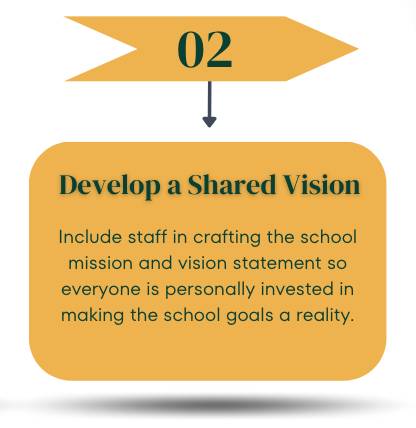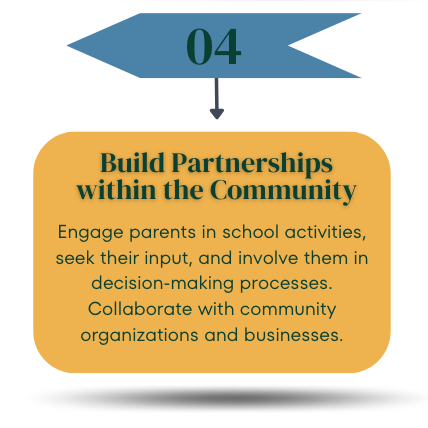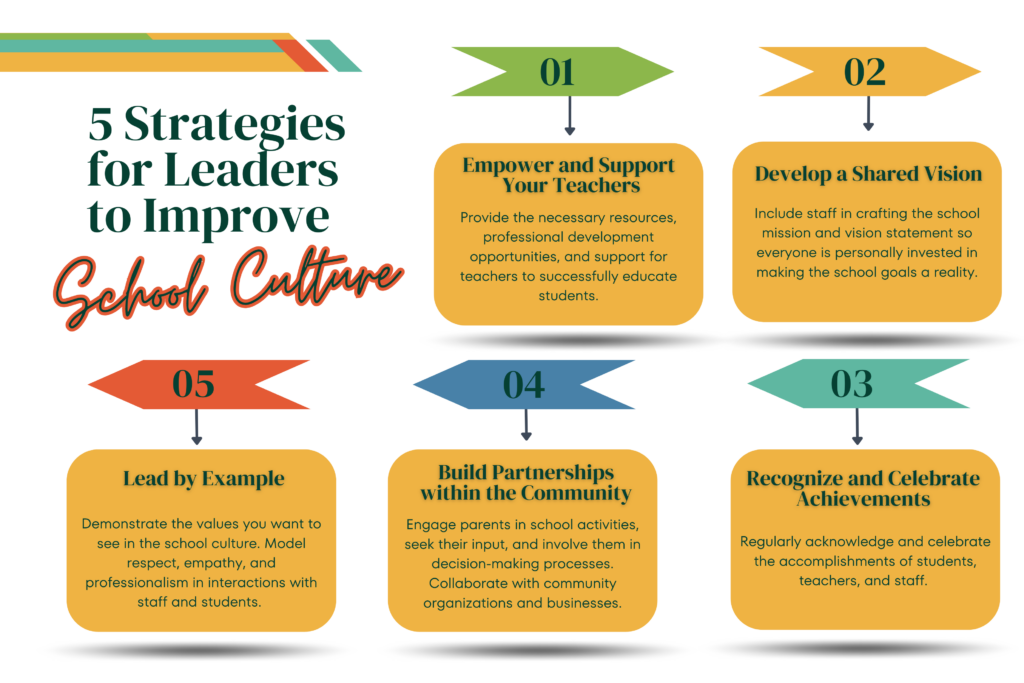School leaders play a critical role in shaping and improving school culture. Culture is the way things are done in an organization, association, or school. It reflects the underlying norms and values that shape patterns of behavior, attitudes, and expectations between stakeholders in the school. It affects everything, from teacher satisfaction to student achievement.
Let’s look at some strategies, specifically for leaders, to help build a strong school culture.
Empower and Support Your Teachers

Provide teachers with the necessary resources, professional development opportunities, and support to create a positive classroom environment. Teachers have a difficult job. It’s essential that they know they can discuss issues with their administrators. It’s important to actively listen to teachers and make sure they feel heard.
It’s equally important to provide teachers with the best possible resources so they can do their job effectively. According to the National Educational Association, well over 90 percent of teachers spend their own money on school supplies and other items their students need to succeed. If possible, give your teachers the tools and resources they need to successfully educate their students.
Develop a Shared Vision

The school’s mission and vision are essential elements of the school’s culture. It often happens that leaders set their own goals and ideas for the school. Instead, include staff in crafting the school mission and vision statements. That way, all stakeholders will be personally invested in making the school’s goals a reality, creating a strong, positive, and collaborative school culture.
Recognize and Celebrate Achievements

Regularly acknowledge and celebrate the accomplishments of students, teachers, and staff. Implement recognition programs, highlight success stories, and publicly appreciate the efforts and contributions of everyone at your school. Celebrate everything from birthdays to academic and instructional successes.
For example, you could:
- Create a “Staff Member of the Month” program to recognize the outstanding work our teachers are regularly doing.
- Promote student success on a bulletin board in an area of your building that has high volume.
- Create a newsletter that contains articles about positive news for members of your staff or student body.
Build Partnerships with Parents and the Community

Establish strong connections with parents and the community. Engage parents in school activities, seek their input, and involve them in decision-making processes. Collaborate with community organizations and businesses to enhance the learning experiences and opportunities for students. For example, involve the parents at your school by inviting them to volunteer, participate on committees, or lead fundraisers. If possible, allow and encourage parents to visit the school with an open‑door policy so they feel welcome.
Lead by Example

Demonstrate the behaviors and values you want to see in the school culture. Model respect, empathy, and professionalism in your interactions with staff and students. You have a list of qualities and values that you want to see in your teachers and students. How well do you present those in your daily interactions? When you interact with teachers and students, you should be an example of the behavior that you want to see in your school.
By implementing these strategies, you can effectively lead the way in improving school culture and creating a positive and nurturing environment for all members of the school community


